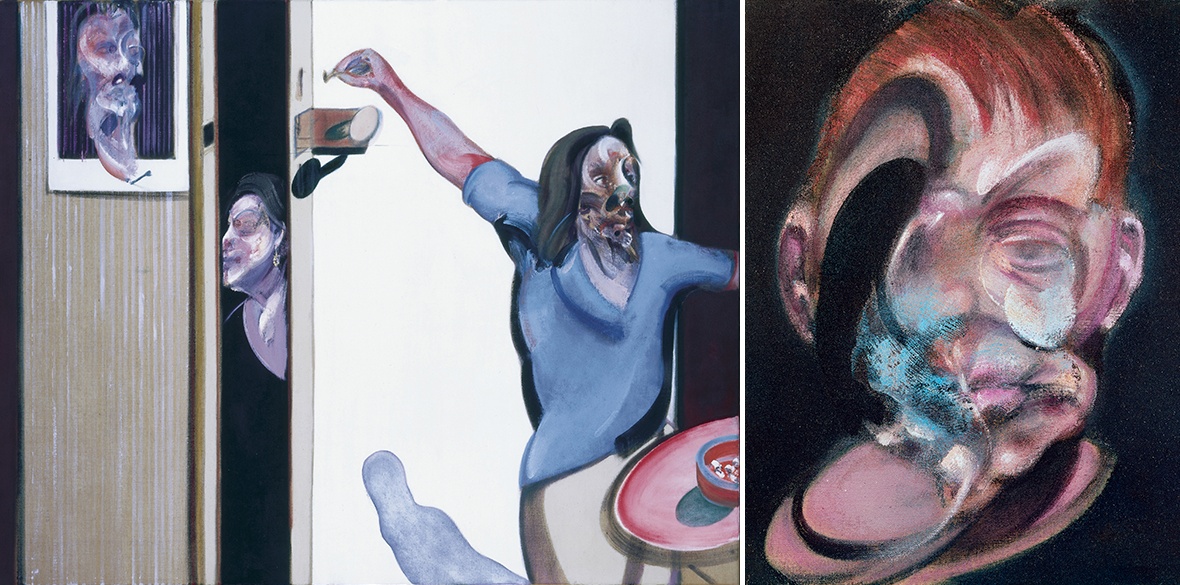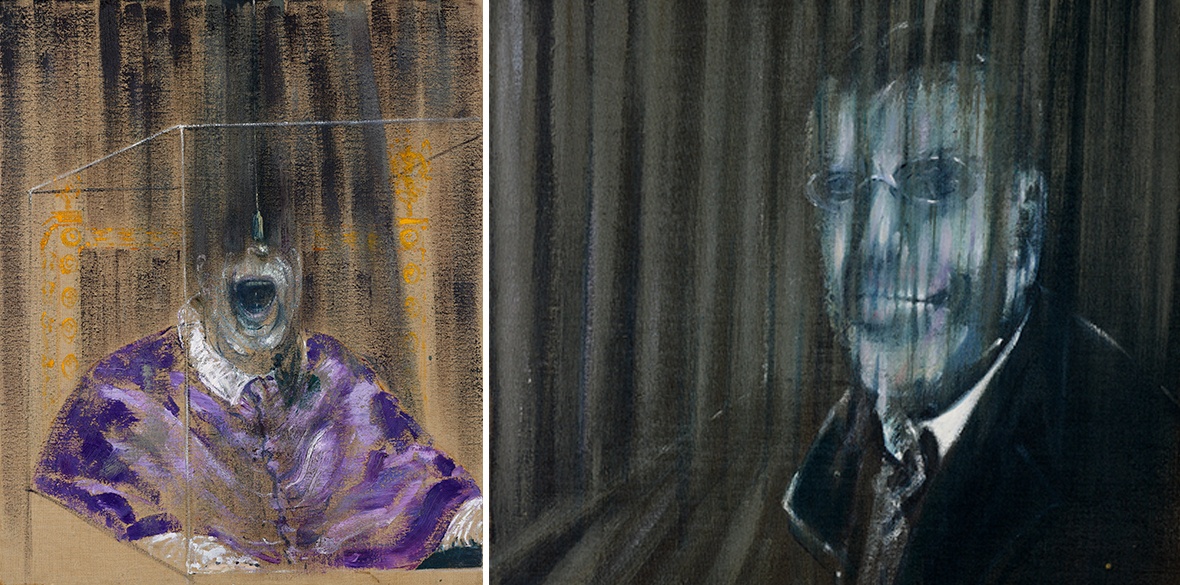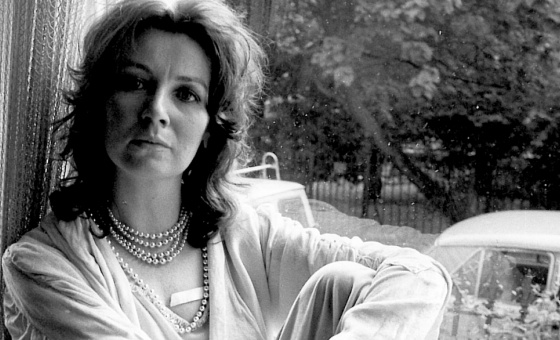This is the last article you can read this month
You can read more article this month
You can read more articles this month
Sorry your limit is up for this month
Reset on:
Please help support the Morning Star by subscribing here
IN our age of digitally retouched selfies, Francis Bacon’s portraits come as a monumental shock. The faces in his paintings, which dissolve at every turn, are chilling, as a major show at the National Portrait Gallery demonstrates.
Visitors to Francis Bacon: Human Presence are greeted by his studies of papal figures and men in suits. In these works, Bacon encased his figures in the suggestions of boxes, which are known as “space-frames.” He also deployed a painting technique known as “shuttering” in which he added a series of vertical lines to the portrait.
These works set the tone for the show and reinforce one of Bacon’s key ideas — that paintings cannot preserve life. “We [humans] are meat,” he once said, “we are potential carcasses.”
Bacon’s portraits do not fix identity, but expose the workings of death. This is personified in the disintegrating faces of his portraits, which are only oriented by the presence of an ear or mouth. Come too close and everything dissolves into a powdery splat.
Bacon’s is an art of intimacy, predominantly depicting people that were dear to him — his friends and lovers. But his painting was also an act of violence. We see the actions of brutality in the whips of paint that deform his sitters’ appearances and the residue of thick white gobbets.
Bacon was clear about his intentions — he wanted to get to the essence of a person, to look behind their appearance. To do so he distorted their mere likeness until he reached something more substantial.
Metaphorically, this was a lesson in discarding pleasantries and identifying triggers until you get to the wounds beneath.
Realising the challenges involved in conducting such a brutal operation in front of his subjects, from the end of the 1950s Bacon preferred to work from photos because it enabled him to enact the violence with a degree of separation.
Bacon redefined portraiture. As the art critic and journalist John Russell said, he shows what it’s like to be in a room with no looking-glass and to be completely alone. The result is the collapse of features.
Gone are the traditional comforts of portraiture, the backdrop to the person. Here are vestiges of a room, of the most banal elements — a single light bulb, an ash tray.
My own interpretation of Bacon’s work recasts him as the painter of postmortems. An artist who witnessed the freneticism before death, where life is at its most vital and the vulnerability of the human at its most raw.
This is easier to process in the context of anonymous papal figures or businessmen, but becomes far less palatable in the presence of people known to Bacon — his friends and lovers.
The moral perturbation of seeing the anguish of the flesh as it dissolves in Bacon’s paintings is heightened by the presence of the photographs that he worked from, many of which were taken by John Deakin.
The juxtaposition of the painted portraits with the photographs of the sitters is one of the most powerful features of the show.
With his violent swipes of paint and the pressure of rags pressed onto painted faces, Bacon makes his presence felt throughout the exhibition.
He makes himself known in other ways, too, like his superimposed presence onto the figure of his lover, former fighter pilot Peter Lacy in Study of Figure in a Landscape (1952).
Then there is the array of self-portraits that he worked on in the 1970s, which give quiet contemplation to his existential angst. His deformed heads lie in stark contrast to the photographic prints of the younger, almost serene-looking Bacon taken by Irving Penn, Cecil Beaton, Helmar Lerski and Francis Julian Gutmann.
The gravest portrait of all is the Triptych May-June, 1973 where we see Bacon’s lover, George Dyer, through a hotel bathroom door. He’s enveloped in blackness, lurching towards death.
Quite unlike his general disdain for narrative, this triptych conveys his sorrow at the loss of Dyer, who died from a drink and drugs overdose shortly before the opening of Bacon’s retrospective at the Grand Palais in 1971. Portrait of a Man Walking Down Steps (1972) is a further tribute to Dyer.
This exhibit of more than 50 works showcases Bacon’s redefinition of portraiture as a study of the human condition of death, with no hiding place. Several highlights stand out.
There’s the inclusion of Self-Portrait with Beret by Rembrandt (1659), for example, which showcases the non-representational brushmarks that inspired Bacon’s technique. There’s the life cast of William Blake by James S Deville, which has a gravitas that reinforces the ravaged faces that surround us from all sides. And then there are the teeth bared at us from Bacon’s portraits themselves.
I walked away from the show with the afterimage of the white teeth in Study of the Human Head (1953) lingering — a reminder that when the flesh falls away, bones are all we’re left with.
Francis Bacon: Human Presence is showing at the National Portrait Gallery until January 19 2025.
Rina Arya is professor of critical and cultural theory and head of the School of the Arts at the University of Hull.
This article is republished from The Conversation under a Creative Commons license.
![]()








